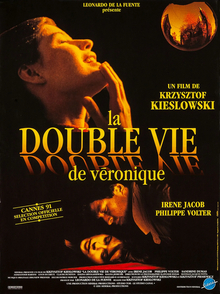A blog formerly known as Bookishness / By Charles Matthews
"Dazzled by so many and such marvelous inventions, the people of Macondo ... became indignant over the living images that the prosperous merchant Bruno Crespi projected in the theater with the lion-head ticket windows, for a character who had died and was buried in one film and for whose misfortune tears had been shed would reappear alive and transformed into an Arab in the next one. The audience, who had paid two cents apiece to share the difficulties of the actors, would not tolerate that outlandish fraud and they broke up the seats. The mayor, at the urging of Bruno Crespi, explained in a proclamation that the cinema was a machine of illusions that did not merit the emotional outbursts of the audience. With that discouraging explanation many ... decided not to return to the movies, considering that they already had too many troubles of their own to weep over the acted-out misfortunes of imaginary beings."--Gabriel García Márquez, One Hundred Years of Solitude
Monday, January 2, 2017
The Double Life of Véronique (Krzysztof Kieslowski, 1991)
The Netflix series Sense8 is about eight people born at the same moment in widely dispersed parts of the world. Each possesses the psychic gift to communicate with the others, sometimes to rescue one of the eight from danger. (They also occasionally participate in rather impressive group sex. Perhaps as a team-building exercise.) Sense8 takes the ancient idea that everyone has a Doppelgänger -- a physical and sometimes psychic twin -- and cubes it, eliminating the physical identity while boosting the psychic one. Krzystof Kieslowski sticks to the more traditional idea of the Doppelgänger in The Double Life of Véronique, in which Irène Jacob plays both a Polish woman named Weronika and a French woman named Véronique. Neither is fully aware of the other's existence, although Weronika once tells her father that she doesn't feel alone in the world, and Véronique tells hers that she has a feeling she has lost someone, as indeed she has: Weronika has died. Their paths crossed only once, when Véronique visited Kraków as a tourist, but although Weronika saw her double on a tour bus, Véronique learns of her existence only later, when she examines a photograph she took that includes Weronika. Kieslowski's film, from a screenplay he wrote with Krzysztof Piesewicz, deals with the parallel lives of the two women and with their emotional and symbolic intersections. It's all remarkably done, with a superb performance by Jacob that equals and sometimes surpasses her work in Kieslowski's Three Colors: Red (1994), and extraordinarily expressive cinematography by Slawomir Idziak that manipulates colors with haunting effect. As with Red, however, I feel a bit let down by Kieslowski's tendency to go for sentiment: I'm left with a feeling that there's something hollow at the film's core, a lack of substance underlying the impressive acting and technique. Still, a lesser director than Kieslowski might have gone all the way, to a Hollywood-style romantic ending instead of the somewhat ambiguous one he gives us.
Links:
Irène Jacob,
Krzysztof Kieslowski,
Krzysztov Piesiewicz,
Slawomir Idziak,
The Double Life of Véronique
Subscribe to:
Posts (Atom)
